Oyster Varieties
Eastern Oyster (Crassostrea virginica)
Also known as Gulf, Atlantic or American oysters, easterns are popularity prize winners at seafood bars on both U.S. coasts. With a thick, deeply cupped an elongated shell (two to five inches across), this East Coast bivalve is both attractive and tasty. It thrives on reefs in water depths of between eight and 25 feet. Easterns were once so plentiful in East Coast embayments that they posed navigational hazards to ships. However the effects of disease and habitat destruction have caused many populations to dwindle dramatically.
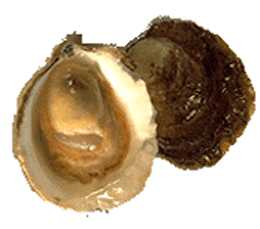
European Flat Oyster (Ostrea edulis)
Also called a Belon, the European flat oyster is another tasty import now grown in Washington. It was introduced to the Northwest in the 1950s. The European flat has a rounder shell than other species and is possibly the most popular among half-shell enthusiasts.
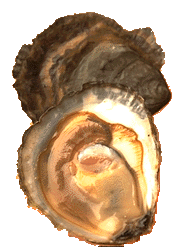
Kumomoto Oyster (Crassostrea sikamea)
Named for the Japanese prefecture where this stock was first cultivated, the Kumamoto is a molluscan morsel that has gained a strong following in the Northwest. Originally imported in the late 1940s to replace diminishing supplies of Pacifics, these treasures have been adopted by a handful of local growers. They have a subtler, more refined flavor than Olympia oysters and their shells hold considerably more meat--a real plus for seafood connoisseurs.
Unlike the Olympia oyster, this species can't spawn in the comparatively colder waters of Puget Sound and the outer coast. Washington's growers must rely on hatchery stock. This drawback is offset by the fact that Kumomotos are available in all seasons, even in summer when "Olys" and Pacifics are spawning, hence unsuitable for harvest. It takes about three years for "Komos" to reach a marketable size--about two inches across.
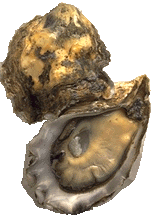
Olympia Oyster (Ostrea conchaphila)
Found in the marine waters from Baja California to Sitka, Alaska, the Olympia oyster is the Northwest's only native oyster species. Its small size (less than 2 inches across) makes this animal easily distinguished from other species.
Once a common inhabitant of the subtidal zone, this species has become increasingly difficult to locate--the silent victim of habitat loss and shoreline degradation. Recreational harvesters of Olympia oysters should focus their searches on the underside of beach rocks during extremely low tides.
What do Olympias taste like? Naturalist William Cooper, who traversed the Washington Territory in the 1850s, found them to "possess the same peculiar coppery flavor remarked in the European mollusk when eaten for the first time."
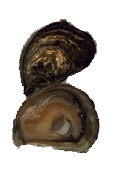
Pacific Oyster (Crassostrea gigas)
Several times the size of the easter oyster, the Pacific or Japanese oyster is the giant of Northwest shellfish beds. It is also one of the fastest-growing species, reaching sexual maturity in a year--a third of the time it takes for an Olympic oyster to achieve this feat. In addition, it is better suited than either of its distant relatives to endure coastal weather.
For all these reasons, the Pacific is one of the most intensively cultivated species in the world. It is harvested from Southeast Alaska to northern Baja California, with the most intense harvest activity in Washington and British Columbia.
The meat of this oyster is sweet tasting and rich, with a mild cucumber aftertaste. "It is best eaten uncooked on the half-shell or steamed, grilled, baked, poached, smoked or fried," says the Pike Place Public Market Seafood Cookbook.
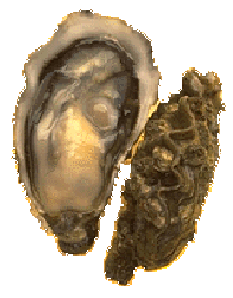
Return to Oysters Are Cool